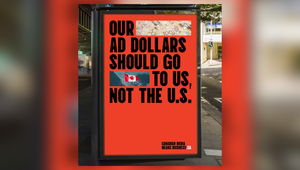
Brands Fail at Youth Culture When They "Throw a Hoodie at a Trend"

When you spend years building experiences that young people actually care about, you learn things no trend report can teach you. You see what grabs their attention and what makes them leave early. You learn why something gets shared, screenshotted and stitched, and why something else just gets a polite head nod and is forgotten by morning.
We didn’t plan to start an agency. We were too busy throwing events. Loud ones. Packed ones. Nights where the energy hit you before the music did. Young people, and the young at heart, in outfits carefully chosen to look like they hadn’t tried. Phones out. Group chats already dissecting the night before it even began.
At the time, it felt like chaos. Now we know it was market research.
Many brands still treat youth culture like a puzzle to be solved. Like if they just crack the right format or borrow the right language, they’ll be in. But culture doesn’t work like that. It is not a code. It is a conversation. And young audiences are fluent. They have seen it all. They have grown up watching campaigns try and fail to speak their language, often with the enthusiasm of a dad at a house party.
This generation can spot a brand play from a mile away. If you think you can just jump on a trend and instantly connect, you are already behind. TikToks, memes, slang, streetwear drops, and borrowed nostalgia from the nineties — none of it works without context, timing, or meaning. Real relevance only comes from being there, listening, learning and knowing when to speak up and when to go sit back.
We have been lucky to build something real with this audience. Not just through content, but through actual moments. Dance floors, pop-ups, late-night WhatsApps. The stuff that sticks. From that, we’ve built a creative agency. One that is still rooted in those spaces. Still close enough to know when something is landing and when it is just not.
We do not pretend to have all the answers. The landscape shifts too quickly for that. But what we do have is proximity. We are in the comments. We are at the events. We are watching the group chats light up when a campaign hits the mark. And yes, we have seen it go the other way, too.
So what can brands actually take from all this?
First, stop trying to go viral. That is not a strategy. It is a side effect. Chasing it often leads to a moment that feels off, inauthentic or flat. Young audiences are not asking for perfection. They are asking for presence. For brands to understand the rhythm of a moment, not just the mechanics of a platform.
Second, do not try to be something you are not. There is nothing more transparent than a brand trying to mimic youth culture without actually understanding it. This generation does not need you to sound like them or look like them. They need you to respect the world they live in. That respect is earned by showing up early, paying attention and being honest about what you bring to the room.
Too many brands still treat relevance as something that can be reverse-engineered. If you follow the right steps, pick the right influencer, and land on the right meme, you will somehow win culture. But culture is not a reward for good behaviour. It is a space that moves fast, rewards nuance and does not care about your KPIs.
The brands that get it right are not the loudest. They are the most observant. They know when to lead and when to support. When to collaborate and when to step back. They understand that youth culture is not a marketing channel. It is a living ecosystem. And if you want to play a role, you need to show up with something meaningful.
That starts with curiosity. Showing up not to hijack the conversation, but to contribute to it. Being responsive. Being real. Being willing to say we do not know everything, but we are here to learn. That mindset travels. And it gets remembered long after the campaign ends.
And when you do show up, make it count. Do not just throw a hoodie at a trend and call it community. Do not force your brand into spaces it does not belong. Instead, create something that matters. A moment. A story. A feeling. Something that will still be in the group chat tomorrow morning.
This generation is not waiting to be marketed to. They are already building the culture they want. If you want in, you cannot just appear when it suits your content calendar. You must be there consistently, with purpose and patience. And if you are lucky, they will let you stay.
We can't sell brands a 10-step plan to win Gen Z. It does not exist. You need to have been in the room.
The brands that succeed are not the ones pretending to be cool. They are the ones willing to listen, learn, and show up for real.















